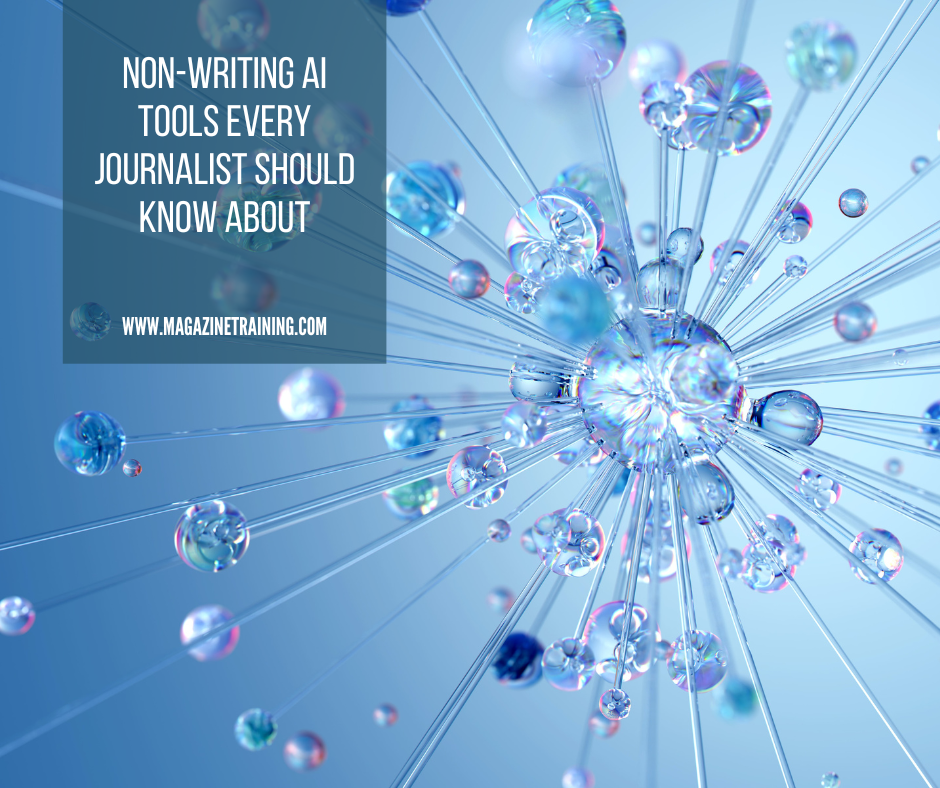
The rise of AI technologies is transforming the way journalists work, and while text-generating models like ChatGPT make most of the headlines, there is much more to this rapidly-evolving technology.
From algorithms that help investigative journalists uncover hidden stories in data to machine learning systems that transcribe interviews and translate content and tools to optimize paywalls and interactions with readers, the AI landscape for journalists is diverse and expanding.
“There are AI applications for every stage of the journalistic process, from the newsgathering to the production and the distribution – as well as business and engagement use cases,” said Mattia Peretti, manager of the JournalismAI project run by the journalism think tank, Polis of the London School of Economics and Political Science. They are becoming more accessible and affordable, he noted: “The database of AI tools for small and local newsrooms recently published by Partnership on AI includes lots of great examples.”
This newfound power comes with risks, from machine learning bias to ethical dilemmas, however. “AI tools can be an invaluable resource for journalists, [but] human oversight must be guaranteed in order to avoid the publication of inaccurate data or untrue allegations,” warned Colin Porlezza, director of the European Journalism Observatory and assistant professor of digital journalism at the Università della Svizzera italiana. Different concerns might arise at different stages, he said, from checking that the system’s design aligns with journalistic values to verifying the accuracy of data used and ensuring transparency in the application’s purpose and methodology.
Additionally, as chat-based software, like ChatGPT and image-generators like DALL-E or Midjourney, become more widespread, they present new challenges to controlling the spread of misinformation. News consumers may bypass traditional media sources, for instance, and instead access information through these systems. “This could disrupt a lot of the existing digital journalism business ecosystem [and] open up a slew of issues such as source validations and the credibility of publishers and individual journalists,” said Sejin Paik, a Ph.D. candidate at Boston University specializing in AI-mediated communication and human-computer interaction.
To navigate these complexities responsibly, it’s essential to be well-versed in the tools available. Here are non-writing AI applications worth knowing.
Information discovery
AI-powered tools can help journalists streamline information-gathering and uncover hidden stories within datasets. new/s/leak, short for “NetWork of Searchable Leaks,” for example, is a free tool that uses both language technology and visualizations to help journalists sift through large amounts of text data and identify relevant material and unexpected connections more effectively.
“The system is similar to what we built at City, University of London, with DMINR, a tool for news discovery and verification to help journalists work with big data and conduct investigations,” Porlezza explained.
Tagging and archiving
“Automatic tagging might sound like a boring use of AI,” Porlezza said. “However, only a thorough archiving and tagging system allows newsrooms to make the most out of their huge archives.”
Incorrect tagging can cause valuable information to be lost within the databases, making a well-trained system essential. To help simplify this process, Porlezza suggests using Varia, a tool “relatively successful in the German market,” which provides a categorization system with intelligent search and retrieval capabilities.
by
Related posts
Magazine Training International’s mission is to encourage, strengthen, and provide training and resources to Christian magazine publishers as they seek to build the church and reach their societies for Christ.

